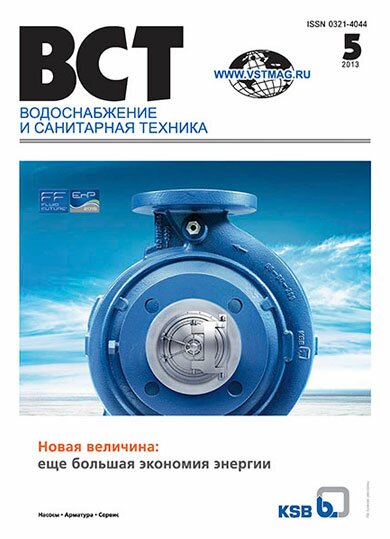
Number 5 / 2013
To download all number in format PDFThe further text is accessible on a paid subscription.
For authorisation enter the login/password.
Or subscribe
Number maintenance (pdf) (doc)
Number abstract (doc)
Literature lists to articles (doc)
|
bbk 000000
UDC 628.35
Yavtoushenko M. V., Rouzayev V. I., Belyaeva S. D., Tarasova O. V., Bibyaev A. V., Belyaev M. A.
Commissioning the upgraded biological treatment plant at the Podolsk wastewater treatment facilities
Summary
The results of commissioning the upgraded biological treatment plant at the Podolsk wastewater treatment facilities are presented. The start up of the basic equipment, mixers and recycle pumps installed in anaerobic and anoxic zones; the secondary settler equipment; the new Korean NEUROS NХ-300 air blowers was carried out. The tertiary treatment unit washing regime during commissioning was defined. Commissioning of the UV-disinfection plant was carried out. The operational parameters of the treatment facilities were monitored by the automatic analyzers and sensors data; the laboratory control was carried out as well. Exceeding the incoming wastewater flow compared to the design value was noted; exceeding suspended solids and phosphate concentrations in the incoming wastewater was registered. However, despite the excess of the incoming wastewater flow and increased concentration of pollutants, the treatment facilities ensure advanced elimination of organic matter and nutrients.
Key words
biological treatment plant , dephosphatization , active sludge dosage , aftertreatment , nitri-denitrification , disinfection , dissolved oxygen , reconstruction , wastewater , in-process control
|
| Read more... |
bbk 000000
UDC 628.35:661.63
KOZLOV M. N., Streltsov S. A., Kevbrina M. V., Gavrilin A. M., Gazizova N. G.
Acidification (prefermentation) as a method of raw sludge stabilization in the process of nutrients removal from wastewater
Summary
The concentration of readily available organic matter determines the stability of biological elimination of phosphate phosphorus from wastewater. Wastewater in Moscow is characterized with low value of this index. The process of raw sludge acidification (prefermentation) is one of the methods of increasing the concentration of readily available organics. The results of laboratory, pilot and industrial-scale testing raw sludge acidification at the Moscow wastewater treatment facilities are presented. Acidification process provides for increasing the concentration of volatile fatty acids in wastewater that improves the stability of phosphate phosphorus elimination in the aeration tanks operating with the technology developed at the University of Cape Town.
Key words
acidification , readily available organic matter , prefermentation , удаление фосфора
|
| Read more... |
bbk 000000
UDC
Scientific and practical conference in commemoration of S. V. Yakovlev, Academician of the Russian Academy of Sciences
|
| Read more... |
bbk 000000
UDC 628.316:504.054
Koulakov A. A.
Environmental assessment of a «water body – effluent discharge» scheme
Summary
During the studies an approach to the environmental assessment of a «water body-effluent discharge scheme» was developed. Probability of meeting the design performance of biological treatment and environmental requirements at small-scale municipal wastewater treatment facilities was evaluated. Maximum permissible concentration exceeding factor both in effluents and river water before and after discharging by the example of the Vologda Region case study was determined. Relationships between hydraulic and chemical parameters of effluent receiving bodies and discharged effluents were defined.
Key words
water object , sewerage treatment facilities , maximum permissible concentration , wastewater , environmental assessment
|
| Read more... |
bbk 000000
UDC 628.16.065
ZHAVORONKOVA V. I., SMIRNOV A. D., Belyak А. А., Lainer Yu. A., Milkov G. A.
Investigating the coagulating capacity of advanced aluminium-containing coagulants in natural water treatment
Summary
The results of testing three new coagulants developed at the A. A. Baikov Institute of Metallurgy and Material Sciences of the Russian Academy of Sciences: two North-Onega bauxite-based coagulants and one red-mud-based coagulant are presented. The test results showed that the overall performance of water treatment with optimal dosages of the new coagulants was practically similar to the treatment with traditional aluminium sulfate, except for the red-mud-based coagulant that increased the concentration of iron ions in water after treatment.
Key words
iron , coagulant , turbidity , natural water treatment , chromaticity , efficiency of treatment
|
| Read more... |
bbk 000000
УДК 628.16:504.064
Sokolov D. M., Netchayev D. N.
Petrifilms (3M™ Petrifilm™) – innovative test-systems for microbial water quality monitoring
Summary
The specific features and benefits of the express method of microbiologic water quality monitoring with 3М™ Petrifilm™ are considered. 3М™ Petrifilm™ is an advanced medium standard used in Russia and abroad for microbiologic monitoring of food products, beverages and water quality. The 3М™ Petrifilm™ shelf life as long as dehydrated culture media; at the same time 3М™ Petrifilm™ is much easier to use. One of the main advantages of 3М™ Petrifilm™ is that there is no stage of culture media preparation. The main types of The 3М™ Petrifilm™ Aqua Plates for water testing are tests for determination of the number of heterotrophic bacteria (total microbial count), coliforms and enterobacteria (glucose-positive coliform bacteria), yeast and mold. The target microorganisms are determined from the growth on the selective medium, occurrence of acidification zone and gas formation. 3М™ Petrifilm™ Aqua Plates ensure valid and reliable results of analyzing drinking water by direct inoculation and membrane filtration.
Key words
3М™ Petrifilm™ Aqua Plates , glucose-positive coliform bacteria , membrane filtration , microbiological analysis , total coliform bacteria , TVC , Petrifilms , potable water , termotolerant coliform bacteria
|
| Read more... |
bbk 000000
UDC 628.16.069
Kofman V. Ya.
Dissolved-air flotation in water treatment (a review of foreign literature)
Summary
A review of foreign literature on one of the perspective water treatment technologies, i. e. dissolved-air flotation, is presented. The process of dissolved-air flotation provides for decreasing water turbidity, eliminating algae, Giardia cysts and Cryptosporidium oocysts; whereby, the treatment efficiency is higher compared to sedimentation. The technology ensures efficient removal of low turbidity levels. Overseas, beyond controversy, the tendency of using dissolved-air flotation units for purification of water and wastewater of different origin is increasing.
Key words
water treatment , hydraulic loading , pressure flotation , efficiency of treatment
|
| Read more... |
bbk 000000
UDC 628.35:661.5
SHVETSOV V. N., MOROZOVA K. M., Stepanov S. V., Blinkova L. A., Belyakov A. V.
Investigating nitrification-denitrification technologies of oily wastewater treatment
Summary
The results of investigating biological treatment by nitrification-denitrification technology of oily wastes of the Novokuybyshevsky oil refinery are presented. Possible meeting the advanced requirements to the effluent quality in relation to nitrogen compounds, particularly, by industrial wastewater treatment without blending with municipal wastewater is shown. The kinetic constants of nitrification-denitrification processes and oxidation of oil products required for designing wastewater treatment facilities are determined.
key words
biological treatment , denitrification , kinetic constant , oil refinery , nitrification , wastewater
|
| Read more... |
bbk 000000
UDC 628.336.429
Pavlinova I. I.
Technological decisions on effective sludge processing with energy recovery
|
| Read more... |
|
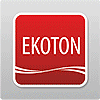
![]()
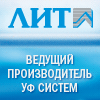
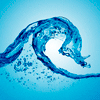
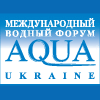
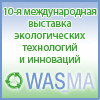
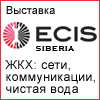


![]()





